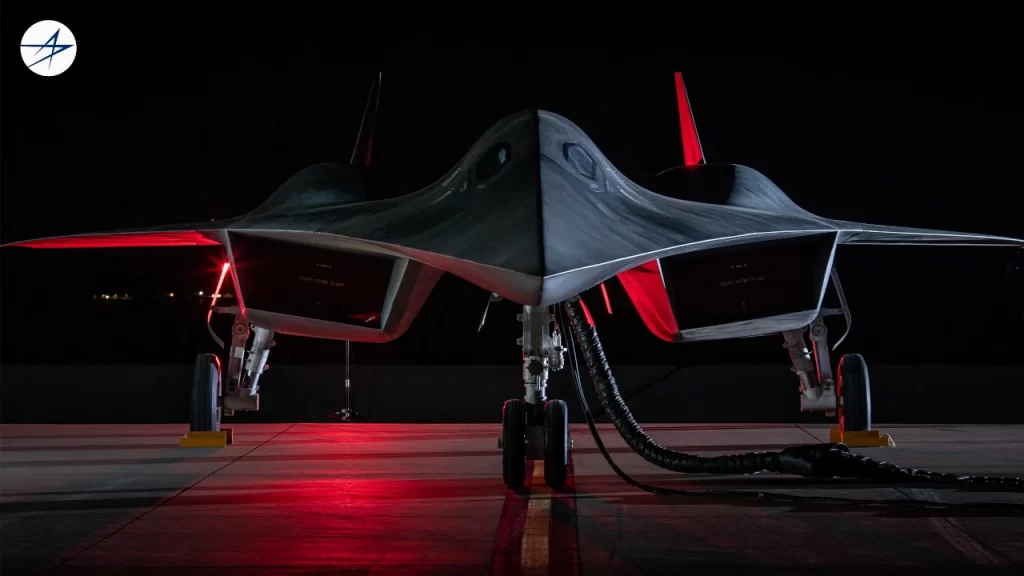At the end of 2023, in one of the episodes of the podcast “Defense & Aerospace Air Power,” Vago Muradian, editor-in-chief of Defense & Aerospace Report, mentioned the RQ-180—a high-altitude stealth aircraft so secret that the U.S. government has yet to acknowledge its existence, despite it being photographed several times in flight over the past few years. The high-flying RQ-180 (the true name of the platform remains unknown) is expected to replace the venerable American spy plane U-2 and the RQ-4 Global Hawk in the coming years.
But Muradian did not stop there.
He said Skunk Works has another program in place for a much more powerful reconnaissance aircraft, a Lockheed Martin model, possibly referring to SR-72. He stated that Skunk Works has already delivered some units, but this program has encountered issues. According to Muradian, the program underwent revisions due to its ambitious nature, necessitating a slight downsizing in order to progress to the next aircraft block.
The SR-72 was once publicly touted as a spy plane capable of speeds exceeding Mach 6, with strike capabilities and minimal interception risk (see video here). Lockheed Martin began developing the hypersonic successor to the SR-71 Blackbird in 2006. The program remained secret for seven years before being officially announced to the public in 2013 through media outlets, including several interviews with Brad Leland, the head of Lockheed Martin’s hypersonic program and the engineer who led the efforts over those previous seven years.
Leland stated in a now-removed Lockheed Martin press release that hypersonic aircraft and hypersonic missiles could penetrate restricted airspace and strike nearly any location on the continent in less than an hour.
There has been no further confirmation of Muradian’s claims so far, but many consider him a reliable source, and the timelines he suggested seem to align both with the unforeseen expenses that Lockheed Martin has since incurred and with what we know about the firm’s expansion.
There has been no further confirmation of Muradian’s claims so far, but many consider him a reliable source, and the timelines he suggested seem to align both with Lockheed Martin’s unforeseen expenses and with what we know about the firm’s expansion. The aviation community once dismissed rumors about the Lockheed Martin SR-72 program as mere fantasy, but in the years since these efforts started, the technology required to make this aircraft fly has advanced from being on the verge of science fiction to something a group of daring newcomers could accomplish in an industrial park. And this is not hyperbole—as you read this article, the Atlanta-based startup Hermeus continues ground tests of its Quarterhorse Mk 1 flying technology demonstrator, with the first real flight tests of the platform expected to take place any day now (see video here).
This unmanned aircraft has its own hypersonic ambitions, and it aims to achieve them using a similar approach to propulsion. Nearly two years ago, the Hermeus Chimera turbine-based combined cycle engine demonstrated its ability to switch from turbojet to ramjet mode in a high-speed wind tunnel. The company has initiated work on a much larger Chimera 2 turbojet engine, which replaces the small J85 turbojet with a significantly larger F100 turbofan engine. The company has identified one of Lockheed Martin’s engines as the foundation for its own engine design.

Hermeus intends to introduce a new technology demonstrator every year as it advances its twin-engine military aircraft, Dark Horse. Lockheed Martin executives suggested the 2030s as the timeline for Dark Horse’s appearance.
In 2022, the U.S. Air Force Research Laboratory awarded Leidos a $334 million contract to develop a very similar TBCC aircraft, named Mayhem, for reconnaissance and strike operations. However, the company later scaled back the development of this program, citing insufficient operational demand—possibly because two similar and promising platforms (the SR-72 and Quarterhorse) were already under development, funded by the Pentagon’s budget.
In 2021, Pratt & Whitney announced its own efforts to create a unique high-speed ramjet engine that would not rely on the traditional turbofan-to-ramjet design to achieve speeds just below the hypersonic barrier. In January 2024, GE Aerospace announced its progress in developing a dual-mode rotating detonation ramjet engine, which it plans to combine with a turbofan to create the smallest, lightest, and most powerful TBCC power plant ever built.
Thus, it now seems almost inevitable that the United States will deploy a reusable hypersonic aircraft in the not-too-distant future. We don’t know if Lockheed Martin, Hermeus, or another company is producing this aircraft, but the available evidence suggests that Lockheed might have a competitive advantage. If low-rate initial production of the SR-72 has already begun, it could mean a similar timeline for entry into service as the B-21 Raider, with deployment expected shortly before the end of the decade.
